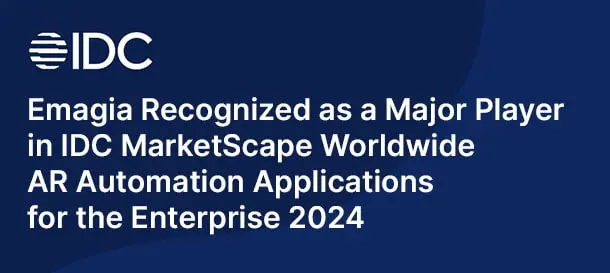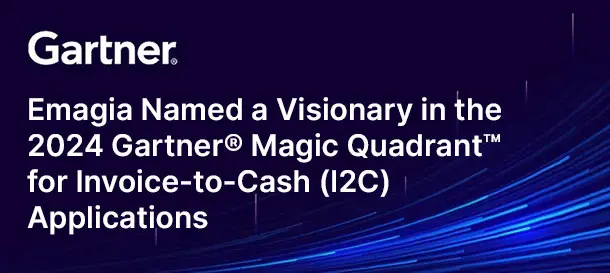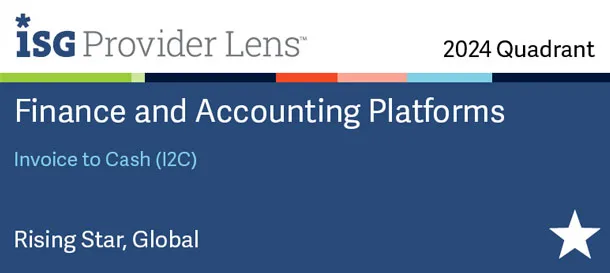Harness the power of AI agents to streamline your Order-to-Cash operations, improve cash flow, and boost operational efficiency.
Most finance executives today are familiar with agentic AI and its potential use cases. But the critical question remains: How do you move from awareness to effective integration? The real value doesn’t come simply from adopting agentic AI; it comes from adopting it strategically to unlock measurable business impact.
While agentic AI promises transformative benefits, it also carries risks. Gartner warns that by 2027, many agentic AI projects will fail due to unclear business objectives, insufficient risk controls, and poor cost management. Scaling AI successfully requires a focused, strategic approach to maximize ROI and minimize pitfalls.
The right integration approach can not only enhance cash flow and operational resilience but also free finance teams to focus on higher-value activities, such as forecasting, planning, and stakeholder engagement.
Why Agentic AI Matters for Enterprise Finance
Agentic AI refers to intelligent software agents that make autonomous decisions, understand context, and learn continuously. Unlike traditional automation or robotic process automation (RPA), agentic AI dynamically adapts to exceptions, collaborates across workflows, and handles complex tasks without requiring constant human oversight.
Within enterprise finance, agentic AI can:
- Accelerate cash application by automatically matching payments from diverse sources,
- Validate and route deductions and disputes using historical and contextual data,
- Prioritize collections by assessing customer risk dynamically,
- Seamlessly integrate with ERP and financial systems, acting as a digital team member within your finance ecosystem.
Five Key Steps to Integrate Agentic AI in Enterprise Finance
1. Define Clear Business Objectives Aligned to Finance KPIs
Identify the most pressing pain points in your Order-to-Cash cycle—areas consuming excessive resources or causing bottlenecks. Typical goals include reducing DSO, increasing straight-through processing (STP), minimizing exceptions, or speeding dispute resolution. Set clear, measurable, and time-bound targets (e.g., reduce DSO by 15 days within six months) to maintain focus and accountability.
2. Align Stakeholders and Prepare Your Organization for Change
Agentic AI will reshape roles and workflows. Engage finance process owners, IT teams, and transformation leads early to create a shared vision. Develop a change management plan that includes training, ongoing communication, and feedback loops. Make sure all stakeholders clearly understand where and how AI will be integrated.
Emphasize that AI augments, not replaces, teams, handling repetitive tasks to enable staff to focus on higher-value analysis and decision-making.
3. Evaluate and Prepare Data and Systems Infrastructure
Agentic AI depends on timely, accurate, and integrated data. Assess the quality and accessibility of your ERP, payment platforms, CRM, and other relevant systems. Address data silos, clean inconsistencies, and ensure that security and compliance standards are met.
Close collaboration between finance process owners and IT is critical to ensure any data structure changes align with operational needs and avoid disruptions.
4. Launch a Pilot Project with Clear Scope and Metrics
Choose a manageable, high-impact use case, such as automating cash application or deduction validation, for your pilot. Define KPIs that matter: STP rates, exception reduction, time saved, and decision accuracy. Track performance closely and gather user feedback to refine workflows and agent behavior.
Make ROI and performance metrics visible and share them widely to build momentum and secure broader organizational support.
5. Create a Governance and Scaling Framework
Once pilots succeed, establish governance structures to manage risk, compliance, and continuous improvement. Develop standardized processes for onboarding new agents, monitoring performance, and coordinating multi-agent workflows.
Consider creating a centralized knowledge resource documenting development, onboarding, and integration best practices to streamline future agent deployments.
Emagia: Your Trusted Partner for Enterprise Finance Innovation
Integrating agentic AI can be complex, but you do not have to navigate it alone.
Whether you’re defining strategic goals, managing change, preparing data infrastructure, or building scalable AI frameworks, Emagia’s 15 years of finance automation expertise and solutions are with you every step of the way, championing innovative AI-powered finance solutions.
Take the Next Step Toward Autonomous Finance Powered by Agentic AI
Transform your finance operations with confidence using Emagia’s Gia Agent Orchestration Studio.
👉 Explore Emagia’s Gia Agent Orchestration Studio
FAQs
- How does Agentic AI go beyond traditional finance automation?
Traditional automation is rule-based; it can only handle the exact scenarios for which it’s programmed. Agentic AI brings adaptability, context awareness, and autonomous decision-making, allowing it to resolve exceptions and improve processes without constant intervention. - Which areas of enterprise finance see the fastest ROI?
Processes in the Order-to-Cash cycle are prime candidates. Automating cash application, validating deductions, prioritizing collections, and integrating directly with ERP systems can shorten cycle times and improve cash flow almost immediately. - What’s the right first step toward integrating Agentic AI?
Start small, but start strategically. Choose a high-impact process, define measurable success metrics, involve all key stakeholders early, and ensure your data is clean and accessible before launching your pilot. - What risks should finance leaders watch for?
The most common pitfalls include unclear business objectives, inadequate data infrastructure, and insufficient change management planning. Overly broad pilots or a lack of ROI tracking can also slow adoption. - Will Agentic AI replace existing finance teams?
No, its purpose is to augment teams, not replace them. By automating repetitive tasks, Agentic AI enables finance professionals to focus on higher-value priorities, such as forecasting, planning, and strategic initiatives.
6. How can Emagia help accelerate success?
With the Gia Agent Orchestration Studio, Emagia provides both the technology and expertise to design, deploy, and scale finance-focused AI agents, ensuring seamless adoption and measurable business impact.




